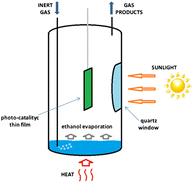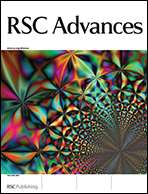H2 production by selective photo-dehydrogenation of ethanol in gas and liquid phase on CuOx/TiO2 nanocomposites
Abstract
CuOx/TiO2 nanocomposites prepared by copper photodeposition (1.0 and 2.5 wt% copper loading) on TiO2 (synthesized by three different routes) are studied in the ethanol photo-dehydrogenation in gas- and liquid-phase operations, and characterized in terms of surface area, phase composition by XRD, morphology and copper-oxide nanoparticle size distribution, and copper species by UV-visible diffuse reflectance spectroscopy. Cu2+ ions partially enter into the titania structure leading to the creation of oxygen vacancies responsible for the shift in the band gap, but also the creation of traps for photogenerated holes and electrons. While the band gap shifts to lower energies with the copper content, a maximum photocatalytic activity is shown for the intermediate copper loading. Gas-phase operations allow a higher H2 productivity with respect to liquid-phase operations, and especially a higher selectivity (about 92–93%) to acetaldehyde. It is remarked that the route of photo-dehydrogenation of ethanol to H2 and acetaldehyde has an economic value about 3.0–3.5 times higher than the alternative route of photoreforming to produce H2. Gas-phase operations would be preferable for the photo-dehydrogenation of ethanol.


 Please wait while we load your content...
Please wait while we load your content...